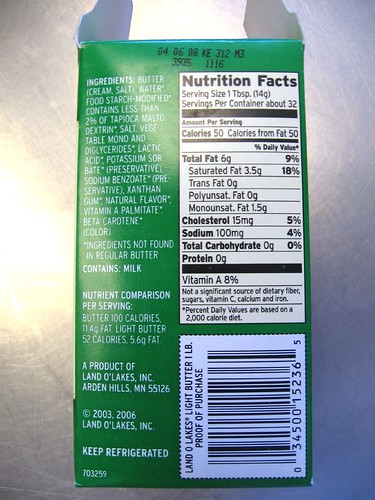If your focus is on better health, it's best to avoid processed foods as much as possible, and base the bulk of your diet on fresh, organic fruits and vegetables. It may seem a drastic statement, but one that is disturbingly true and factual - almost all processed foods, whether sweet or savory, contain harmful ingredients such as high fructose corn syrup, the insidious monosodium glutamate, also known as MSG, a flavor-enhancer that causes a variety of allergic reactions and unpleasant side-effects in human beings, and dangerous hydrogenated oils, also known as trans-fats.
It's also extremely important to note that big food companies with deep pockets have been able to push their agendas through the FDA, and due to this, items that are GMO (genetically modified organisms), or contain GMO ingredients, are not labeled. Read that again - they ARE NOT labeled. How frightening is that? The only way to be certain that you're not eating GMOs is to look for items that are 100% organic certified by the USDA *not* the FDA as the USDA certification is legally regulated.
Again, the safest and best decision you can make for your health is to avoid processed foods, but, if it's realistically too difficult to avoid them altogether due to issues of convenience or family preference, then here is a list of the most dangerous ingredients (and phrasing), which you should try to leave out of your diet unequivocally.
- Artificial Colors
- Artificial Flavorings
- Artificial Sweeteners (Acesulfame-K, Aspartame, Equal®, NutraSweet®, Saccharin, Sweet’n Low®, Sucralose, Splenda® & Sorbitol)
- Benzoate Preservatives (BHT, BHA, TBHQ)
- Brominated Vegetable Oil(BVO)
- High Fructose Corn Syrup (HFCS)
- MSG (Monosodium Glutamate)
- Partially Hydrogenated Oil
- Propyl Galate
- Sodium Nitrate or Sodium Nitrite
- Sugar
- Enriched or bleached flour
This is by no means a comprehensive list, so please do some additional homework and educate yourself on the spectrum of harmful food additives, and be proactive when it comes to your and your family's health.
This article is by Allison McElroy, a freelance writer who contributes guest posts for Advance Me Inc. America's leading provider of the merchant cash advance.

























































No comments:
Post a Comment
Please leave us some love...and have yourself a groovy day~!! Peaces...xoxo